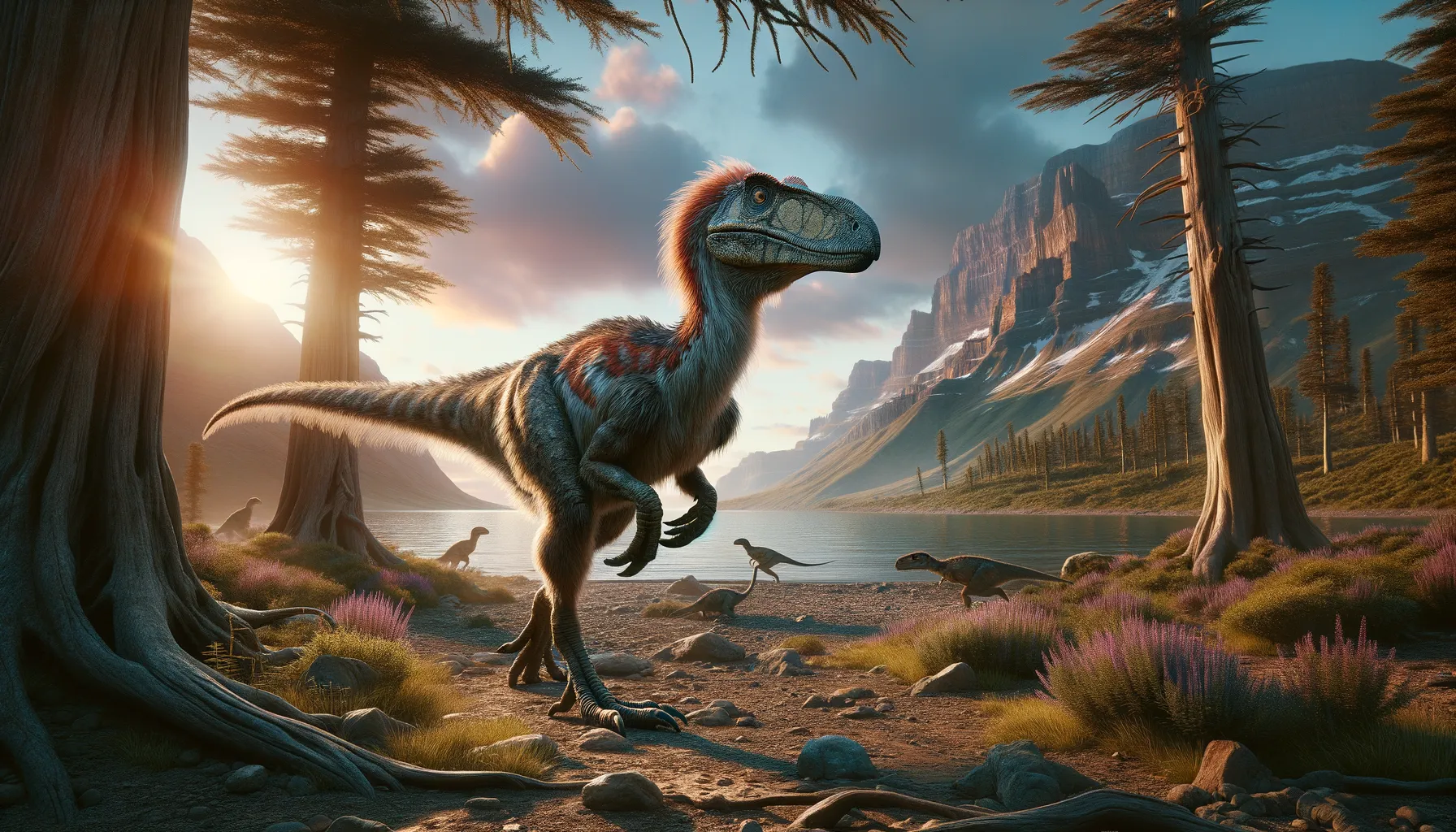
Hagryphus
Swift forager of the Cretaceous terrains.
Period
Cretaceous
Length
Reached lengths of approximately 2 meters.
Height
Stood about 1.5 meters tall.
Weight
Estimated to weigh around 50 kilograms.
Hagryphus is a lesser-known dinosaur that walked the Earth during the Late Cretaceous period. It belonged to the oviraptorosaurs, a group known for their bird-like features. The Hagryphus was a bipedal dinosaur with characteristics suggesting it was omnivorous. Its discovery in North America adds valuable insight into the distribution and diversity of oviraptorosaurs during this time. Its relatively small size and agile build suggest it was an active forager in its ecosystem.
Diet
Hagryphus was likely omnivorous, feeding on a variety of plant material and small animals. Its diet might have included seeds, fruits, and possibly smaller vertebrates.
Hunting
Hagryphus is thought to have used its speed and agility to catch small prey. It may have foraged in varied environments, employing its dexterous hands and beak-like mouth in hunting.
Environmental challenges
Hagryphus lived in a dynamic environment with fluctuations in climate and vegetation. Competition for resources with other herbivores and omnivores would have been fierce. Predation from larger carnivorous dinosaurs posed a constant threat. Surviving such challenges required adaptability and social behaviors to find resources and evade predators.
Speed
It was likely quite fast, capable of quick sprints.
Lifespan
Potentially lived for several decades.
First discovery
Discovered in Utah, USA in 2005.
Fun Facts
- Hagryphus is a relatively small dinosaur that lived about 75 million years ago during the Late Cretaceous period.
- The name 'Hagryphus' means 'Ha's griffin', named after an Egyptian god, and it suggests that people thought this dinosaur was as powerful and elusive as a mythical griffin.
- Hagryphus was found in what is now the state of Utah in the United States.
- It belonged to a group of dinosaurs known as theropods, which also includes the famous Tyrannosaurus rex.
- Hagryphus was likely covered in feathers and had a beak, making it look a bit like a giant bird.
- This dinosaur was an omnivore, meaning it probably ate both plants and small animals.
- Hagryphus had long, strong legs and is believed to have been a fast runner, useful for escaping predators or chasing prey.
Growth and Development
Juvenile Hagryphus likely grew rapidly to reach a stage where they could better defend themselves. The transition from juvenile to adult would have involved changes in diet and physical capabilities. Their bone structure indicates they were agile from a young age, allowing early foraging skills to develop.
Habitat
Hagryphus inhabited regions with a mix of open plains and forests, providing plenty of food sources. These areas supported a diverse range of flora and fauna, creating a complex food web. Water sources would have been vital, both for hydration and potential hunting grounds. Seasonal changes would have influenced their movement patterns, perhaps requiring migration.
Interaction with other species
Hagryphus would have lived among a variety of dinosaurs, both herbivorous and carnivorous. It likely had complex interactions with these species, whether competing for food or avoiding predators. These interactions would have shaped its behavior, breeding strategies, and social dynamics.
Natural lifespan
Hagryphus likely had a natural lifespan reaching several decades.
Reproduction
Hagryphus likely laid eggs, like its oviraptorosaur relatives. Nesting strategies could have involved communal nesting sites or isolated spots to reduce predation risk. Parental care may have been present, with adults guarding nests and possibly tending to young.
Social behaviour
It may have lived in small groups or family units, which would provide protection and aid in foraging. Communication among group members was likely important, perhaps through vocal or visual signals. Social hierarchies could emerge during breeding seasons or when resources were scarce.
Fossil locations
Fossil remains of Hagryphus have been primarily found in the Grand Staircase-Escalante National Monument in Utah. Its discovery expanded knowledge of dinosaur diversity in North America during the Late Cretaceous. Further excavations in Utah might reveal more about its distribution and lifestyle. Understanding its fossil context helps build a clearer picture of the ecosystems it inhabited.
